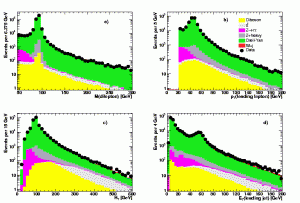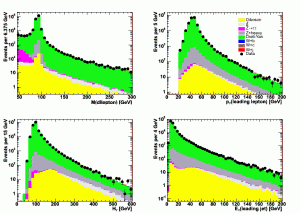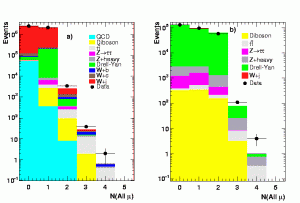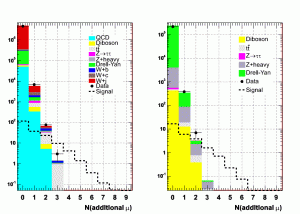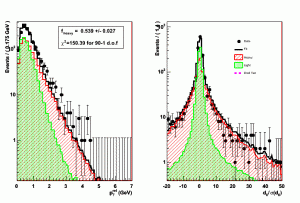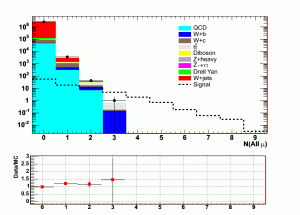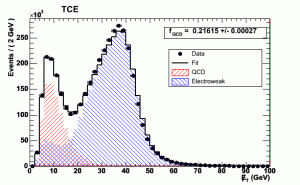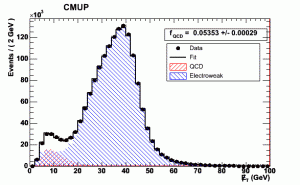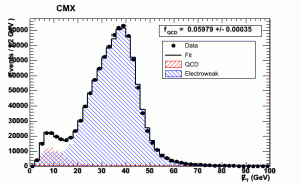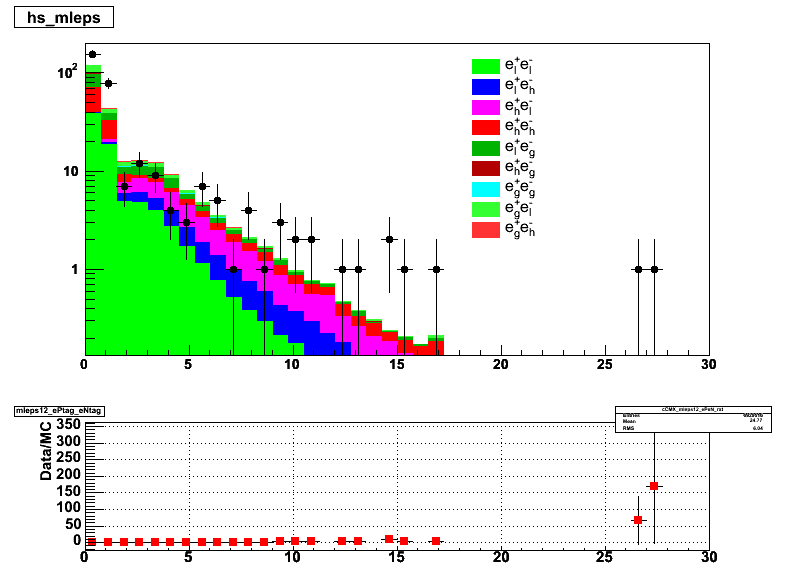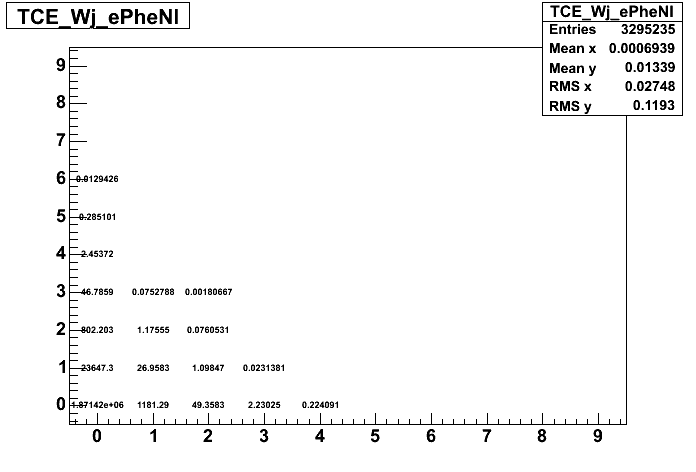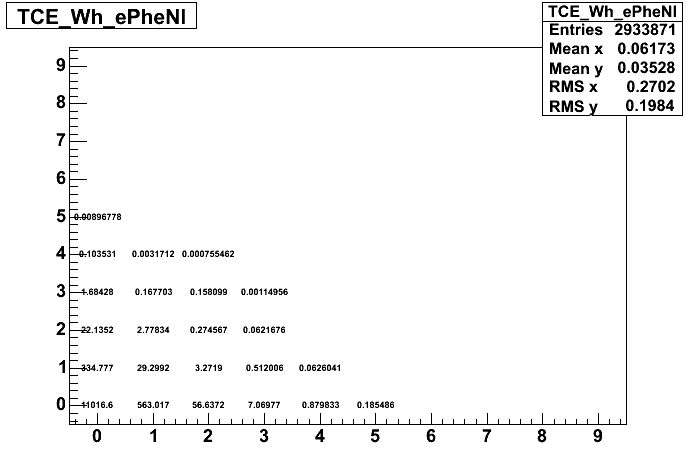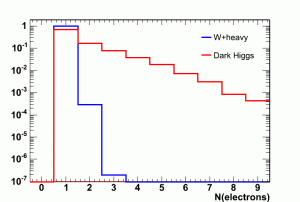Below is a first attempt at listing all of the systematic errors we need to calculate and proposed techniques for calculating them.
- QCD rate – maximum variation found in CDF 6636 is 26% for N(jets)>3. This may be overly conservative.
- Lepton & trigger ID – can be obtained from the R-ratio as done by Sasha.
- MC modelling for soft lepton ID – Some possibilities are
- Use top selection. Take delta(1 mu) as a starting point for the uncertainty. See if the difference changes as a function of N(mu) and blow up the error by this slope.
- Do the single lepton fit using pTrel & S(d0). Use this as a starting point for the uncertainty. Blow up by Delta(Nmu) slope obtained from the top selection.
- Take the maximum variation in N(taggable), pT(taggable), eta(taggable) in the single lepton bin and then feed the difference through the tag rate/mistag matrices.
- There is expected to be a 5% tracking over efficiency in the MC. Depending on how we estimate this uncertainty, it may be covered. If it is not, I can throw out 5% of the tracks (possibly depending on pT) and rerun the prediction.
- Soft muon tag rate –
- propagate fit errors from J/psi.
- fit epsilon(pT) in 2 bins of eta and vary fit function.
- Soft muon mistag rate –
- take largest (Observed-Predicted)/Observed from various jet samples.
